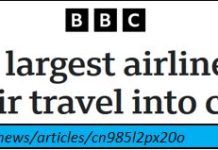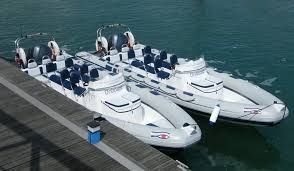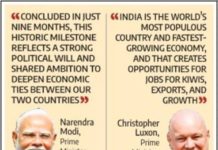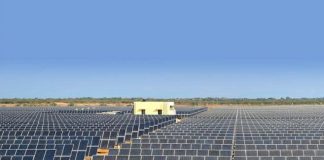This article appeared in DNA on 13 Dec 2010. URL not traceable. But a pdf copy of the article can be got from 2010-12-13_LeisureBoats)

DNA Conversations
Leisure boating means money, jobs and even security
Leisure boating means money, jobs and a vibrant economy. Had this been vibrant, even 26/11 would not have happened.
Most policymakers often associate boating with luxury or with fishing boats. The concept of leisure boating has yet to catch the popular imagination. More importantly, even the government does not realize how vitally important this sector could be – in terms of money, employment, even security. It was to discuss these aspects that RN Bhaskar of DNA decided to bring together some of the leaders of the leisure boating industry. To discuss this issue, were Jayendra Kachalia, treasurer, Indian Marine Federation (IMF), and director of Navnit Marine, Riyadh Kundanmal, member, executive committee, IMF, and director Marketing for Ocean Crest Marine, Aashim Mongia, member, executive committee, IMF and managing director of West Coast Marine Yacht Services, and Sudhir Palkar, manager, IMF. And they expressed their views on the huge opportunities that could be exploited as this sector grows.
Given below are excerpts from this conversation.
DNA: Most people see leisure boats as a past-time meant for the rich. How do you perceive it?
Kachalia: We believe that this sector is at a very nascent state, and has just begun growing. Boating is gathering momentum – whether for short round trips on small ferry boats that holidaymakers use when near the river or the sea, or by purchasing boats that they can use whenever they feel like, or even by people who hire private yachts for a few days.
Unfortunately, one reason why this sector hasn’t taken off is because current government policies have rules for shipping and rules for fishing boats. There is no clear policy for leisure boats. Consequently, neither the ferry association nor the leisure boating sector are recognized as industry by the government or the banking sector.
DNA: So when a person purchases a boat, what rules does he register his boat under?
Mongia: In Maharashtra, he registers with the Maharashtra Marine Board (MMB). Each state in India has its own corresponding marine board. But the purchaser will find that there are no regulations relating to a pleasure class vessel, no regulations for saling boats. Like any other fishing boat or a ship, there are specifications of how many pumps and fire extinguishers the boat must have. Even if the sailing boat is a small one. So one registers the boat as a sailing vessel and agrees to comply with regulations meant for fishing boats, and then goes about getting exemptions for one stipulation or the other. We, as promoters and suppliers of such boats, help him with all these.
DNA: How many leisure boats do you have registered in Mumbai?
Kachalia: There are 287 members – that is because this is the number registered with the Yacht Club, where every boat owner automatically becomes a member.
DNA: 287 is a decent number to start with. And how many boats would there be in Goa? The same as Mumbai, or more?
Kachalia: Goa is not the same as in Mumbai. In Mumbai you have 287 boats that are that between 18feet to150feet. In Goa the primary market is between 18 and less than 40 feet there are very few boats that are above 40 feet in Goa. The dominant market is 20-30 feet in Goa.
DNA: and how many boats are there in Goa. Curious just to get an idea
Kachalia: About 100 boats
DNA: if you take the western coast. How many boats do you have? the largest center would be Mumbai, Goa, Cochin ….
Mongia: Just around 50-60 boats in Cochin, about the same size as those in Goa..
DNA: I believe that Umaji Chowgule, the chairman of your Federation, is planning to set up a Rs.200 crore Marina at Goa. Will this be India’s first?
Kachalia: There is already one in Cochin, and Goa will now have two.
DNA: So will Mumbai have a Marina?
Kachalia: We have also been asking for at least one Marina in Mumbai. If Cochin with 50 boats can have one, and Goa with 100 boats can have two, why not Mumbai with 287 boats?
Mongia: The Maharashtra Maritime Board has taken out an Expression of Interest to build a marina in Mumbai. In fact, not only in Mumbai but all over the west coast of Maharashtra. It has requested interested bidders to bid for locations justifiable for building marinas. Applications were meant to come in by 24th of September so I presume they will mull over it and come out with a tender. That will set into process the building of many more Marinas in Maharashtra, and on the western coast of India.
DNA: How many Marinas do you expect to come up in Maharashtra?
Kundanmal: I would expect Marina to come up every 40 miles at least. Because when you talk about leisure boating, you talk about a 3 to 4 hour boat ride, after which you dock at a Marina, have your lunch, enjoy yourself, and then head back to your home docking station. Since Mumbai to Goa is around 220 miles , and if you divide this by 40, you could expect a minimum of 8 marinas to come up, depending on the feasibility reports.
DNA: So, you believe that around eight Marinas will come up between Mumbai and Goa.
Mongia: Mumbai could do with a few more Marinas in addition. If the government begins to appreciate what we have been talking about, and if it looks at the potential, Mumbai alone could have four to five Marinas.
DNA: So, you are talking about eight plus five, that is thirteen Marinas coming up. But what about Gujarat, which has the largest coastline among all the states in India.
Kachalia: Yes, many more Marinas could come up in that state as well. It is, after all, one of the most progressive states in the country.
DNA: The next question. Is leisure boating a premium market?
Kundanmal: No. It’s not a premium market. I mean if today if you look at any 18 foot boat , you can buy such a sail boat for Rs.4-5 lacs. It is like buying an I-10 car. So why wouldn’t you want to buy a boat and do something with your time on weekends if you have the facility to do it.
DNA: Where is the problem then?
Mongia: Currently we don’t have any facilities. We don’t have the infrastructure. And there appears to be nothing that anyone can do about this. But if you do have the infrastructure and the facilities, there is enough locations on the waterfront to promote all that you want. And the potential of the market is huge, considering we have so many cars, and also considering that the price of a boat is not much more than a car.
Kachalia: What Aashim says is right. We have to create awareness. So when you have this infrastructure being developed on this coast from Mumbai to Cochin, it could tempt many people to opt for leisure boating. Today, many people are interested but because of the regulatory challenges involved, they are not opting for this activity.. Today they are satisfying their needs by going to le Phuket or Pataya and engaging in leisure boating there. But if they knew that the same facilities are available here, they will use them more and enjoy themselves more frequently.
Riyadh: Just a minute. I am going to be the pessimist out here, not because I like being pessimistic, but because I am being realistic. We do not have a leisure boating industry. We have a boating industry, but not a leisure boating industry. When I say leisure, I am pointing to government policies which assume that people don’t use boats for recreational purposes but primarily for transportation.
Then we don’t have destinations. Yes, you can go from Mumbai to Aligaug ( very close to Mumbai). But where are the other destinations? Goa is too far away. Leisure boating makes sense when you can go to a destination, get off your boat, have dinner, have drinks, have a lovely time and then come back. And then tell others, “I had a great time.”
This is sad considering that the world has two-thirds of water, and India has 7,500 km of coastline. That should make governments give a lot more priority to this activity, much in the same way as they have given to cars.
Mongia: Despite having a 7,500 km coastline
Riyadh: We have a vast coastline, but have no infrastructure that we are proud of. We have not connected ports or cities by boats. Why say that boats are a higher end market? Boats should be the primary means of transport, if you want to decongest the city’s roads. Instead of potholes, you have port holes. This is the a big difference.
We are saying, get into the water transportation business. Get out of driving on the roads. Use your boat for leisure only when you have infrastructure. We don’t have that unfortunately. I am glad to hear that for the first time infrastructure is being created, and the first 7 out of 15-20 marinas could come up soon. But with the number of scams that keep erupting, there are fears that even if today you have this clearance, tomorrow the fishery department or the environment department [nullifies] it. When is Mumbai’s first Marina going to come up. Yes, there’s talk, there’s speculation, there’s hope. But till people don’t come together, and push for something, this will not happen. This can be done only by the press or the media. Ultimately the pen is mightier than the sword. We have to push the government, we have to push governance, and as citizens we have to push people for this action to happen
DNA: Does this mean that you are skeptical about this business growing?
Kundanmal: I am disillusioned by the fact that even though we have a huge waterfront we have we do not have a decent marina [in Mumbai]. And a 30 boat marina is not a decent marina. When you have car pools for a 100 cars or more, why not with boats? To provide mobility to its 1.5 billion people, the government has to put in roads. Here we have a coastline, which can connect coastal cities thus reducing the pressure on arterial roads. Please remember that this is a necessity. Because if you don’t have destinations, you cannot develop a leisure industry.
Mongia: Just to take it up from here, there is a difference between commercial and leisure boating. We have to register ourselves as commercial boats in the absence of a policy for leisure boats. Now, even if you are registered as a commercial boat, if you want to go from Mumbai to Goa on a leisure trip, you might want to stop every 30-40 miles, anchor there, and go swimming. But today, by law, I cannot do that. According to the law, a commercial vessel goes from point A to point B. There is no provision in the laws which allows me to stop mid-ocean and relax. That is an essential part of leisure boating. We need laws which define for us what we can do and what we cannot do. And to be governed well, across all the states, and the entire coastline, it has to be a central legislation.
Riyadh: You need a set of legislations that spell out several details. Before you even consider having marinas, you need to have a breakwater facility, so that boats can shelter and be docked securely in the bay without being buffeted by the waves. But before you have a breakwater, you have to ensure that the marine fall where sewage flows into the sea is far away, so that you do not have sewage floating all over the place. I mean today you talk about health and hygiene; you are talking about sanitation, you are talking about cleanliness, fueling facilities, fresh water.
Usually, the marina takes a break during the monsoons. One has to ensure that the external ocean doesn’t come in, or you will have to remove the excess water during the season.
Please remember that we are not talking merely about a floating pontoon and calling it a marina,
A proper marina is about fueling, cleaning, trained manpower, living conditions, eating conditions, and security. All these things have also to be thought of.
DNA: So, how does one begin?
Riyadh: It has to begin with having a will. Then we need to then take our voice forward to the government. We need to come together as a collective body. Unfortunately, today, the marine industry is extremely fragmented. We are not a collective body. We are not one voice talking. We all have different agendas. It is sad, but it is true
I am not talking of the guys around this table. I am talking about an industry in general whether it is an association of launch owners, or owners of fisheries, ship-builders, sailors – each of them has his own agenda. Everyone wants to survive; it is a competitive world. But we still need one voice, one forum, one agenda for this industry or it will never going to take off.
DNA: What do you think is preventing the growth of this industry?
Kachalia: There’s anarchy; there’s apathy, neglect. We need people beyond the industry to lobby. We need a collective think-tank who will work for the industry. This body needs to have you have to have people who understand boating who understand perils of the sea to understand safety, leisure , transportation to understand the whole base of the boating industry, I am not going to any specific industry. But there are common benefits when you think of what boating can do for the economy. Will it create jobs? Yes . Will it give you an incentive to connect? Yes. Will it save time on transportation? Yes. Will it reduce the green house effect? But then, you need to think of the broad spectrum not the leisure aspect alone. Leisure is very small market. It is less than 1% of the entire economy. We need to talk about the change it can bring in daily commute and lifestyle. And jobs.
Mongia: But imagine if half of 1% own boats. Imagine half a million people owning boats; how many jobs that could provide; how many cars could become unnecessary.
Kundanmal: We want to become an industry, we want to be recognized as an industry.
Mongia: In fact, if one promotes the ocean, and marinas and boats, India could become the number one tourist destination the world. Just consider this, the world has a floating population of 5000 mega yachts. When I say mega yachts I mean super yachts that will travel in and around the world. The size of these mega yachts could be the size starting from 24 meters going to 100 meters and above.
That is 5,000 boats travelling around the world with an average asset value of around $ 3 million. Do the math yourself , and you know that if there were proper destinations where they could dock and refuel, India would benefit from excellent tourism as well. Not to mention the tremendous benefits from jobs in servicing boats, selling boats, training yachtsmen, restaurant staff, and transporters.
From the time they walk in till the time they leave, they spend around a month’s time on the coastline. The amount of revenue the Government would earn in terms of foreign exchange earnings is immense.
Palkar: In addition for every yacht that is coming in every yacht that goes to another port has to pay a fee so the government earns an added revenue.
Mongia: And despite the revenue potential, the government has still not recognized this as an industry.
Kachalia: Then India would be taken as a serious tourist destination. Today it is only Goa or other additional places. What about the entire country? Why only Rajasthan, Goa, Mumbai and Delhi. Why not from one end of the coast to the other?
DNA: One of the serious concerns I think the government has is that of security. How do we handle that?
Kundanmal: If you had marinas in place 26/11 wouldn’t have happened
Kachalia: Today because you don’t have an industry, rules and regulations, the problem of security will exist. Long stretches of lonely beaches pose more of a threat that one vibrant with tourism and industry. More boats will enable financing of security at each port, at each destination. You will have more of democracy, more of information, and more people watching any outsider, or any irregularity.
Mongia: A; if you had a marina in place, which is well manned, then nobody would have broken through your barrier because every boat that left the marina would have to then make a report saying I am leaving for my destination which is X , and by what time I am expected to get there. That destination also confirms my time of arrival..
Kachalia: The point from where terrorists came in had already been pinpointed as a good location for a marina, several times during the past 15 years. But no action was taken.
DNA: Would it be fair to compare the security of a place like UK where you have marinas and the navy both docked at the same ports, the same places?
Kachalia: The reason why the UK can do this is because they have something called the Maritime Coast-guard Agency or the MCA. The MCA has a code of conduct which governs the entire safety and security of both the marinas and the navy ships. They have different leisure and commercial boats above 24 meters and boats below 24 meters. It is a clear-cut demarcation and there are guidelines which govern everything So you have four categories – leisure and commercial, above 24 metres and less than 24 metres.
Riyadh: It is sad to say that the police have been put on water today, but they are not helping us. Instead, they are hindering us. They come and question us and our presence on water. The navy, just three weeks ago, pointed guns at us.
DNA: What you say is correct. So long as the waters don’t have a responsible population floating on them, the shores will remain insecure, and you will never develop security.
Mongia: In fact, this is the best time to develop security in the water, when we don’t have many boats in the water. Creating regulation after many marinas come into existence will complicate matters. You have to regulate boats at the time it becomes a growing industry. The government has the opportunity to start now.
Kundanmal: I have been in the market from 1994 and I remember how from very early years, people were talking about a marina being planned at Cuffe Parade.
Kachalia: In fact they started making a breakwater. The work was half done, and you can see it from Nariman Point. Then the work stopped.
Kundanmal: Today we have 1,700 acres of port land. What is happening with that today? We have natural marinas — Victoria docks is one example. Why aren’t they used to build marinas? Why are they not being used as an infrastructure to enhance boating. Why is it that the builders and politicians would rather have a truck terminal or some other building at that place? Wouldn’t a marina be more rewarding for the nation’s economy, and for a scenic waterfront?
DNA: I believe that most members of the Indian Marine Federation are also involved in selling boats. Who provides them the training for operating these boats?
Mongia: Today if you buy a boat it is the dealer’s responsibility or the company’s responsibility to provide with deck hands to provide with on water training, manual boat training and navigation training. We have these courses for safety within the harbor, advise our customers and members on speed limits as well. Thus, all these facilities are being set up by private citizens.
DNA: So it is a private initiative, not a govt. sponsored one, that the suppliers have taken up themselves
Mongia: Because there is none from the Government. We as a company have setup something called the sailing school, which actually teaches people how to sail safety. We have got ourselves recognized by the Royal Yachting Association of the UK.
DNA: Good!
Mongia: We had to do it. Because if you go to a school in Mumbai and ask them to teach you, say, how to drive a power-boat, they won’t have a power-boat. So we actually set up a school for people who want it.
Kundanmal: It’s an individual private responsibility. It is not a government initiative. We train the person, even provide him with staff and manpower, teach them navigation skills, sailing skills. Basically we are yachts providers who want to make sure that their clients and customer are happy with what they have bought and are safe and secure.
DNA: So how many such training sectors we have in Mumbai
Kundanmal: About seven to eight.
Kundanmal: Every dealer has his own affiliation with an international training school. This way, we provide the best breed of training along with the equipment, and also work towards making this industry both safe and vibrant.
As a collective body, the Indian Marine Federation has now got a consortium of the top 10 of the largest boat dealers in the country. We as a federation are pushing towards getting boating recognized. We should have begun pushing for an industry status some 30 years ago. Yes, we are late but we are still doing whatever we can to make sure that it grows within the next few years. in the next couple of years.
DNA: What, in your opinion is the potential that this industry has?
Mongia: It could become the next Detroit in cars. We could become the world’s biggest players in this industry.
DNA: Can you put this in money terms?
Mongia: Let me put it in another way to you The US market for leisure boating is estimated at $ 4 billion today, even during recessionary times, with a fraction of the population of Indi.
Kundanmal: And the UK market was worth 3 billion British pounds in 2007. The recession could have pushed down the figure a bit. In fact, in 1994, when I was setting up my company, I had offers from people who wanted me to settle down in Dubai. Since then Dubai has gone up from 1 marina to have 25 to 27 marinas. And each marina is sold out! And then look at south-east Asia and China and see how the government is allowing India to be left behind.










































COMMENTS